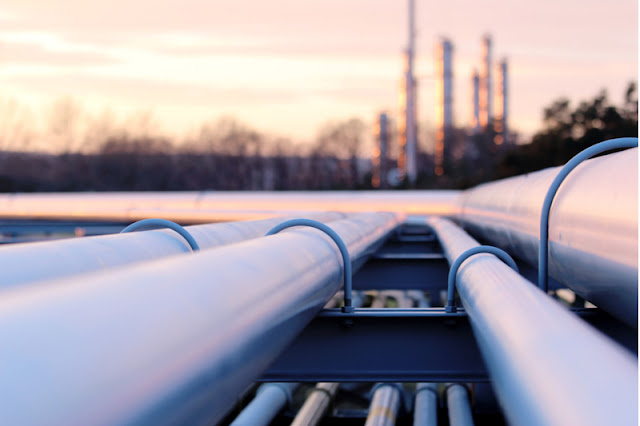Types Of Oil And Natural Gas Pipelines
Oil and natural gas pipelines play a critical role in transporting these commodities to consumers. But with so many different types of pipelines, it can be challenging to understand them all. This post will break down the different types of Oil and Natural Gas PipelinesContracting to better understand how they work.
●
Gathering pipelines: These pipelines collect oil and
gas from wells in the production area and transport them to a central location
for further processing or shipment.
●
Transmission pipelines: These pipelines transport oil
and gas long distances, often crossing state lines or international borders.
●
Distribution pipelines: Local pipelines deliver oil and
gas to homes and businesses.
Oil
And Natural Gas Pipelines Contracting
The
gas and oil industry needs to have a well-maintained operational pipeline
infrastructure. The reliable transportation of oil and gas is crucial to any
country's economy and energy security. As a result, pipeline companies often
put projects out to bid to contractors to maintain and build new pipelines distribution. Contracting for
an oil or gas pipeline can be a complex process, considering many different
factors. This article will look at the different types of contracting that can
be used for oil and natural gas pipelines and the benefits and drawbacks.
Types
Of Oil Pipelines
There
are two types of oil pipelines:
liquid and gas. As the name suggests, liquid pipelines carry liquid
hydrocarbons, while gas pipelines carry natural gas. Liquid pipelines are made
of steel pipes and can carry a variety of liquids such as crude oil, gasoline,
and ethanol. Gas pipelines comprise steel pipes, but they are typically smaller
in diameter than liquid pipelines. They are used to transport natural gas over
long distances.
Types
Of Natural Gas Pipelines
There
are mainly three types of natural gas
pipelines: gathering, transmission, and distribution. The gathering
pipeline is the first line of defense against gas leaks, and it collects gas
from wells and other production areas. The transmission pipeline moves natural
gas from a regional hub to local distribution companies. The distribution pipeline
is the last stop before the gas enters people's homes. It's responsible for
getting the gas to all local businesses and residents who need it.
Differences
Between Oil And Natural Gas Pipelines
Although
both oil and natural gas pipelines carry valuable resources, there are some key
differences. Oil pipelines are typically much more extensive than natural gas
pipelines, for starters. Natural gas is less dense and takes up more space than
oil. Oil pipelines also tend to be longer since oil is available in many
different parts of the world. Another big difference is that natural gas
pipelines are often above-ground, while oil pipelines are typically
underground. Natural gas leaks more quickly and can be dangerous if it builds
up in an enclosed space.
Advantages
And Disadvantages Of Oil And Natural Gas Pipelines
There
are several advantages and disadvantages to using pipelines to transport oil
and natural gas. The main advantage of pipelines is that:
● They are very efficient and can
move large amounts of product over long distances.
● It makes them cost-effective to
move oil and gas from production areas to refineries and consumers.
● Another advantage is that they
are relatively safe modes of transportation, as they are less likely to be
affected by bad weather or accidents than other methods.
The
main drawback of pipelines is that they can be expensive to build and maintain.
They also can be a target for terrorists or saboteurs.
Conclusion
Oil
and natural gas pipelines are an essential part of the economy and way of life.
They transport oil and natural gas from their production area to their usage area.
So choose a supplier that best suits your needs and requirements.


Comments
Post a Comment